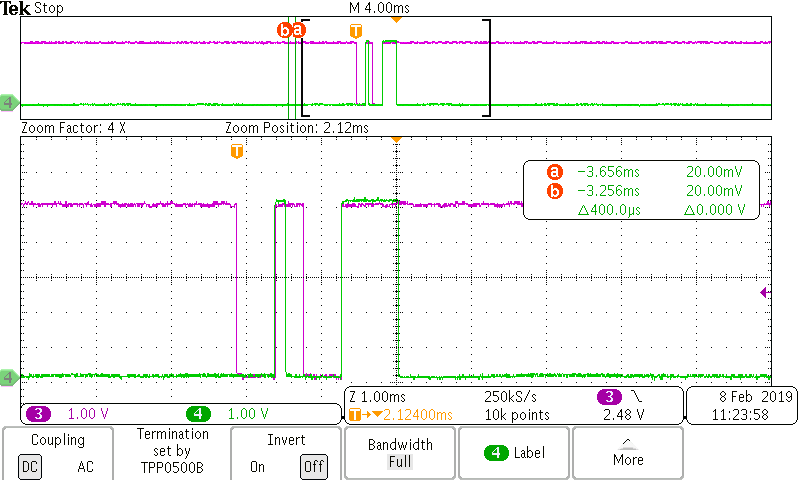Hi,
I am trying to use the TL16C752D RX/TX FIFOs using polling. I'm only reading the LSR for the status of THR/RHR. The RX portion works with no problems. It's in the TX mode where I watch for LSR THR Empty. Currently, I have the FIFOs Levels set at 0 and it seems to work for awhile then seems to get stuck when the TX FIFO is full.
Should I be polling something other than the LSR?
Maybe I should set up interrupts (we don't have interrupts connected) and poll the IIR instead?
I have the UART set up to run at 115200 Baud and am streaming a 292 Byte Packet between this UART and a UART on a separate processor board(RABBIT). It will run fine for awhile but then I start getting timeouts
from the RABBIT.
Any thoughts from the community on this?
Thanks you for the help,
Reif Heck



